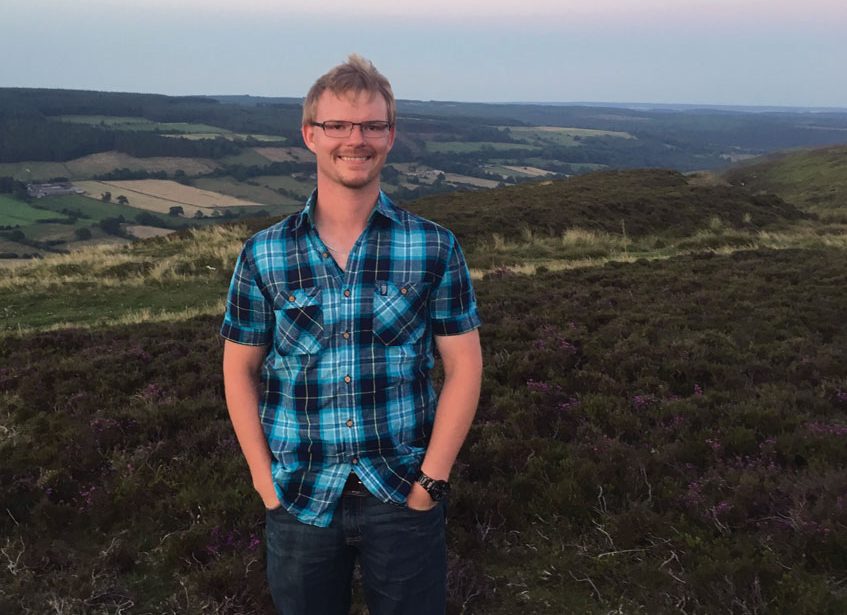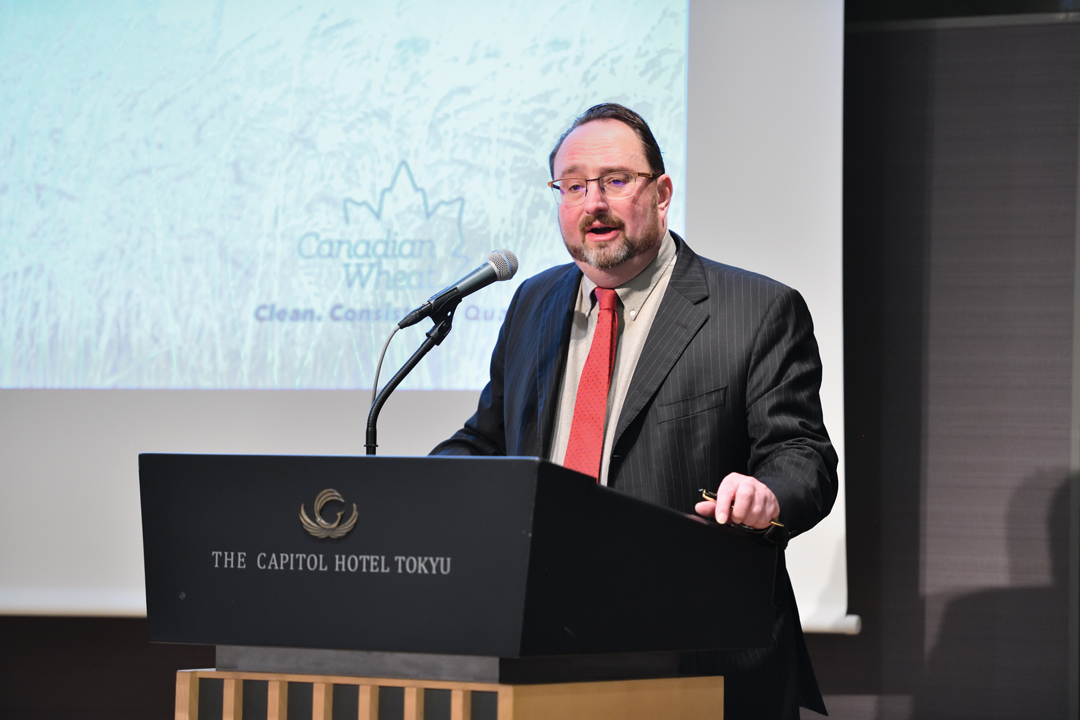LEARNING OPPORTUNITIES FAR AFIELD
AGRICULTURAL WORK EXCHANGE PROVIDES VALUABLE PERSPECTIVE
BY IAN DOIG
Karsten Nielsen grew up on an acreage near Camrose where his family raised sheep and horses and tended to rented hay crops. Now completing a master’s degree in agronomy, Nielsen, along with his girlfriend and schoolmate Kaitlyn Klutz, took leave from his studies at the University of Saskatchewan to participate in an agricultural work-abroad program overseen by International Rural Exchange (IRE). From August 1 through December 1, 2016, the two worked on Danish farms an hour apart, with Nielsen taking a paid position that included room and board near the town of Silkeborg.
GrainsWest: Why did you apply to work abroad?
Karsten Nielsen: We wanted to travel and experience a different culture while gaining experience in agriculture.
GW: What did the placement process entail?
KN: We filled out an IRE application and provided them with resumés. They were fantastic to work with. They sent our information to families they work with in Denmark who were interested in hiring us at a wage that covered our flights and some spending money. IRE walked us through the visa application process and other important paperwork.
GW: What was your first impression of your placement farm?
KN: It was very tidy and well run. Large by Danish standards, it’s a mixed farm with
9,000 feeder pigs on 250 hectares of barley, wheat, rye and rapeseed. The field equipment was very small compared to Western Canada, and so were the fields, but they had modern, high-end equipment.
GW: What was your host family like?
KN: The farmer who hired me had a wife and three children. They were fantastic. One of his kids was on a placement in the States when I was there. My room was in the house next to the farmer’s house, where I ate meals and spent time with the family.
GW: Can you describe your work duties?
KN: I spent one or two hours every morning checking the pigs, making sure they were fed, and doing repairs. During the field season, I did fieldwork for the rest of the day. I was there for harvest as well as seeding fall cover crops and the winter crops. I also hauled grain and did a lot of plowing.
GW: How familiar were you with those tasks?
KN: I was familiar with equipment, but not theirs. They have a lot of three-point hitch equipment that’s a lot smaller and a little more complex than in Western
Canada. I’d never plowed before.
GW: How are Danish farms different from Canadian Prairie farms?
KN: Danish Crown is a corporation owned by farmers and it buys most of the pigs and lots of the crops, and farmers buy most of their feed from it. The farmers are really proud of it. On the crop side, everything was much smaller but usually more productive because they have a longer growing season and a lot more moisture. They don’t have pickup trucks and don’t tend to own heavy trucks. They haul everything with the tractor or contract it out. Some things they pull with a Volkswagen Passat and a trailer.
GW: What farm practices surprised you?
KN: They plow every field every single year with a mouldboard plow, whereas in Western Canada we’re trying not to plow at all. They just have no other way of dealing with all the moisture as well as disease and weeds. It’s very hard to use pesticides—their use is tightly controlled by the government. They also can’t grow
GMO [genetically modified organism] crops, so Roundup is of limited use.
GW: How has the experience affected your perspective on agriculture?
KN: It made me realize how common the struggles are that all farmers face in feeding the world.
GW: Would you recommend other students participate in international farm exchanges?
KN: Absolutely. I’ll remember it my whole life. It gave me an experience no resort vacation ever could. I was able to interact with a Danish family and really got to understand the culture and agricultural practices. This helps you think outside the box.








Comments